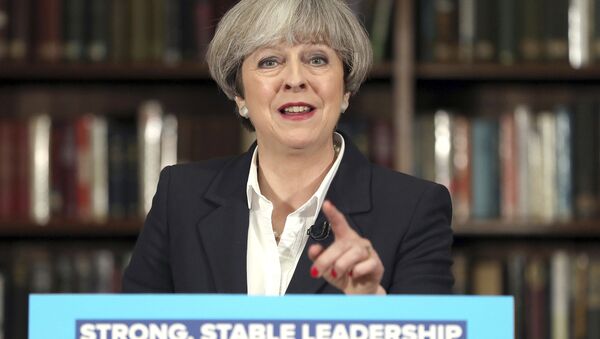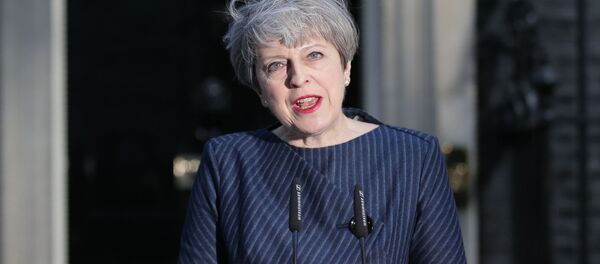Theresa May became Conservative Party leader — and, therefore, prime minister — after the resignation of David Cameron, who announced his intention to quit the day after the UK voted, in a referendum, June 23, to leave the European Union.

However, she changed her mind and called an election, when she knew she would face no opposition from the Labour Party, the majority of whose MPs — largely opposed to its leader, Jeremey Corbyn — wanted an election to lose it so that they could depose Corbyn.

At that time, May had a working majority of only 17 and she went to the country demanding a mandate for the upcoming Brexit negotiations. She wanted to win a landslide victory and all the polls showed she would get it.
My plan for Brexit will return control to Britain and allow us to stand tall in the world again. Find out more: https://t.co/BA1j4gdG5L pic.twitter.com/PYaWXydYIn
— Theresa May (@theresa_may) May 30, 2017
On April 18 — the day May announced the election — her party stood at 48 percent in the opinion polls, against Labour's 23 percent — a huge lead of 25 percent, according to pollsters ICM, which was likely to give her an unassailable win in the general election.
Roll on a few weeks — and with just four days to go before the election, June 8 — her party's lead has slipped to just eleven points, with her Conservative Party of 45 percent, against Labour's 34 percent.
So why has May managed to lose so much? The first answer lies in the fact that she is known as the "Ice Woman" because very few people ever get close to her and she has shown — in TV interviews — herself to be uncomfortable on camera.
Second, she has refused to appear in a head-to-head TV debate with Jeremy Corbyn, which critics say is a sign that she is "frit" — to use the north English expression, meaning "afraid" — of contesting against him.
5 minutes until #BBCQT starts. @Theresa_May, enough time for you to change your mind and defend your record in a head to head debate with me pic.twitter.com/Qr17GTtquN
— Jeremy Corbyn (@jeremycorbyn) June 2, 2017
Third, despite her desires to show herself as "strong and stable" — a phrase she has used time after time since calling the election — she is being seen by many as weak, after a series of policy U-turns, beginning with her decision to call an election, when she had previously said she would not.
Theresa May has a plan for Brexit and beyond. #VoteConservative on 8 June for strong, stable leadership in the national interest. pic.twitter.com/eumLmU9KtB
— Conservatives (@Conservatives) June 5, 2017
Dementia Tax
By far the most damaging U-turn was on the so-called "dementia tax" — the manifesto pledge to make people pay for their social care if they have assets above £100,000 (US$129,000). The controversy sparked a row because those who receive state-funded care at home will be worse off if they have assets of more than £100,000 — such as if they own their home.
Dementia tax u turn. It's a Con. If Mrs May gets a big majority she'll turn a Green Paper into policy overnight. Don't be fooled, be warned!
— Paddy Ashdown (@paddyashdown) 22 May 2017
This was a huge blow to older people — particularly those that Theresa May needs within the Conservative Party to vote for her, June 8. She then announced that the total amount people would have to pay for social care would be capped, but this was not enough the prevent a backlash towards her.
As she heads for the ballot box, Theresa May is facing the possibility that many Conservative voters may simply not turn out, handing the advantage to Labour.
Worse still, she could end up with nothing like the landslide victory she was due to get when she called the election. Her claims of being a "strong and stable" leader are looking increasingly weak and unstable.
She can only hope, privately, that her quick and robust response to the latest terrorist attack can go somewhere close to showing her strength as a leader, but she could not possibly comment on that.




